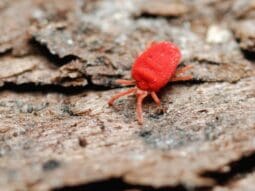
Termites are a homeowner's nightmare, especially in the Southern United States where warm, humid conditions create the perfect environment for these wood-destroying pests. We've seen firsthand how these tiny insects can wreak havoc on homes, causing extensive damage that often goes unnoticed until it's too late.
In the South, subterranean termites are the most common culprits, silently chewing through wooden structures and compromising the integrity of homes. With repair costs potentially reaching tens of thousands of dollars, it's crucial for homeowners to understand the signs of termite infestation and take preventive measures. We'll explore the extent of termite damage in Southern homes and provide valuable insights on how to protect your property from these destructive pests.
Common Termite Species in the Southern US
The Southern United States is home to several destructive termite species that pose a significant threat to homes and structures. We'll examine the three most prevalent termite types found in this region, each with its unique characteristics and damage patterns.
Drywood Termites
Drywood termites infest dry wood without soil contact, making them a serious threat to wooden structures. These pests create galleries within wood, leaving behind distinctive pellet-like droppings. Drywood termites are common in coastal areas of the Southern US, particularly in states like Florida, Georgia, and Texas. They often enter homes through exposed wood or small cracks and can remain undetected for extended periods.
Subterranean Termites
Subterranean termites are the most widespread and destructive species in the Southern US. These termites build underground colonies and construct mud tubes to access wood above ground. Subterranean termites thrive in the warm, humid climate of the South, causing extensive damage to homes' foundations, support beams, and wooden structures. States like Louisiana, Mississippi, and Alabama are particularly susceptible to subterranean termite infestations due to their favorable environmental conditions.
Formosan Termites
Formosan termites, often called "super termites," are an aggressive subterranean species known for their large colony sizes and rapid reproduction rates. These termites can cause severe structural damage in a short time, making them a significant concern for homeowners in the Southern US. Formosan termites are prevalent in states like Louisiana, Texas, and South Carolina, where they've established strong populations. Their ability to create aerial nests and survive with minimal soil contact makes them particularly challenging to control and eradicate.
Signs of Termite Infestation
Detecting termite activity early is crucial for Southern US homeowners to prevent extensive damage. We'll explore the key indicators of termite presence, including both visible signs and hidden damage.
Visual Indicators
Termite infestations often leave visible clues that alert homeowners to their presence. These include:
- Mud tubes: Pencil-width tunnels on exterior walls, foundations, or crawl spaces
- Discarded wings: Piles of translucent wings near windowsills or doors
- Wood damage: Hollow-sounding wood when tapped or blistered wood surfaces
- Frass: Tiny wood-colored pellets resembling sawdust near wooden structures
- Swarmers: Flying termites, often mistaken for flying ants, emerging in spring
Regularly inspecting these areas helps identify termite activity before it escalates into severe structural damage.
Hidden Damage
Termites often cause significant destruction before visible signs appear. Hidden damage includes:
- Weakened structural supports: Load-bearing beams compromised by termite feeding
- Damaged drywall: Discoloration or bubbling in walls due to moisture from termite activity
- Buckling floors: Uneven or sagging flooring caused by termite-weakened joists
- Maze-like patterns: Intricate tunnels within wooden structures, visible when probed
- Hollow wood: Seemingly intact wood that sounds empty when tapped
Professional inspections using specialized tools like infrared cameras and moisture meters can detect these hidden signs, enabling early intervention and minimizing repair costs.
Types of Termite Damage in Homes
Termites cause various types of damage to homes in the Southern US. We'll explore the three main categories of termite-related destruction: structural damage, wood deterioration, and cosmetic issues.
Structural Damage
Structural damage is the most severe form of termite destruction. Termites weaken load-bearing components, compromising the integrity of a home's foundation, walls, and roof. They create hollow spaces within wooden beams, joists, and studs, reducing their strength and stability. In extreme cases, this damage leads to sagging floors, tilting walls, or even structural collapse.
Wood Deterioration
Wood deterioration occurs as termites consume cellulose-based materials. They create intricate tunnel systems within wooden structures, leaving behind a honeycomb-like pattern. This damage affects furniture, hardwood floors, window frames, and door frames. Infested wood often appears blistered or peeling, and it produces a hollow sound when tapped. Over time, severely damaged wood crumbles easily, requiring complete replacement.
Cosmetic Issues
Cosmetic issues are often the first visible signs of termite infestation. These include:
- Peeling or bubbling paint on walls and ceilings
- Discolored or stained drywall
- Small holes in wooden surfaces
- Sagging or warped wood trim
- Accumulation of frass (termite droppings) near infested areas
- Discarded wings from swarming termites on windowsills or floors
While these issues may seem minor, they indicate underlying termite activity and potential structural damage. Addressing cosmetic problems promptly helps prevent more extensive and costly repairs in the future.
Detecting Termite Infestations
Identifying termite infestations early is crucial for minimizing damage to Southern US homes. We'll explore professional inspection methods and DIY detection techniques to help homeowners spot termite activity before it becomes a severe problem.
Professional Inspections
Professional termite inspections are the most reliable way to detect infestations. Trained inspectors use specialized tools and techniques to identify termite activity:
- Visual inspections: Experts examine both interior and exterior areas for signs of termites.
- Moisture meters: These devices detect excess moisture in wood, a common indicator of termite presence.
- Infrared cameras: Thermal imaging can reveal hidden termite colonies within walls.
- Acoustic detectors: These tools pick up sounds of termite activity inside wood structures.
- Borescopes: Small cameras allow inspectors to see inside wall voids without causing damage.
Professional inspections typically occur annually, providing homeowners with peace of mind and early detection of potential infestations.
DIY Detection Methods
While professional inspections are essential, homeowners can perform regular checks to spot early signs of termite activity:
- Wood damage: Look for hollowed-out wood with a honeycomb interior.
- Mud tubes: Inspect foundation walls and crawl spaces for pencil-thick mud tubes.
- Swarmers: Watch for discarded wings near windowsills or doors, indicating recent termite swarms.
- Frass: Check for small piles of termite droppings resembling sawdust or coffee grounds.
- Tight-fitting doors and windows: Termite damage can cause wood to warp, making doors and windows difficult to open.
- Peeling paint: Bubbling or peeling paint may indicate moisture from termite activity.
- Tapping test: Gently tap wooden surfaces; a hollow sound could suggest termite presence.
Regular DIY inspections, combined with annual professional assessments, form a comprehensive approach to detecting termite infestations in Southern US homes.
Termite Damage Repair
Repairing termite damage in Southern US homes requires a systematic approach. We'll explore the assessment process, effective repair techniques, and decision-making between replacement and repair.
Assessing the Extent of Damage
Accurate damage assessment is crucial for effective termite repair. We use visual inspections, moisture meters, and probing tools to determine the damage extent. Our process includes:
- Identifying affected areas: Locating all damaged wood structures
- Evaluating structural integrity: Assessing load-bearing capacity of damaged components
- Documenting damage: Creating detailed reports with photos and measurements
- Estimating repair costs: Calculating expenses based on damage severity and repair methods
Repair Techniques
We employ various repair techniques depending on damage severity:
- Wood hardening: Applying epoxy-based products to reinforce lightly damaged wood
- Sister joists: Installing additional support beams alongside weakened joists
- Plate replacement: Removing and replacing damaged sill plates
- Partial replacement: Cutting out damaged sections and splicing in new wood
- Fumigation: Treating entire structures for widespread infestations
When to Replace vs. Repair
The decision to replace or repair depends on several factors:
| Factor | Replace | Repair |
|---|---|---|
| Damage extent | >20% of structure | <20% of structure |
| Structural integrity | Compromised | Intact |
| Cost-effectiveness | Replacement cheaper | Repair more economical |
| Building codes | Non-compliant after repair | Compliant after repair |
| Historical value | Low | High |
We consider these factors to determine the most appropriate course of action. In cases of extensive damage or compromised structural integrity, replacement is often necessary. For minor damage or historically significant structures, repair is typically the preferred option.
Preventing Termite Damage
Preventing termite damage is crucial for homeowners in the Southern US. We'll explore effective strategies to protect your home from these destructive pests.
Home Maintenance Tips
Regular home maintenance is key to preventing termite infestations. Keep wood siding, door frames, and window frames at least 6 inches above the ground. Fix leaky pipes, gutters, and air conditioning units promptly to reduce moisture. Seal cracks in the foundation with high-quality caulk. Store firewood at least 20 feet away from your home and 5 inches off the ground. Conduct annual termite inspections to catch potential issues early.
Landscape Management
Proper landscape management deters termites from approaching your home. Remove dead trees, stumps, and roots near your property. Avoid using wood mulch within 15 feet of your foundation; opt for crushed stone or pea gravel instead. Keep shrubs and tree branches trimmed away from your home's exterior. Ensure proper drainage around your foundation to prevent water accumulation. Use termite-resistant plants in your landscaping, such as marigolds, catnip, and mint.
Professional Prevention Methods
Professional prevention methods offer long-term protection against termites. Install a termite baiting system around your property's perimeter. Apply liquid termiticide treatments to create a chemical barrier in the soil. Use borate treatments on exposed wood during construction or renovation. Consider installing stainless steel mesh barriers during new construction. Schedule annual professional inspections to monitor for termite activity and maintain prevention measures.
Romex Pest Control Termite Services
At Romex Pest Control, we offer comprehensive termite services tailored for Southern US homeowners. Our expert technicians use advanced techniques to detect, treat, and prevent termite infestations effectively.
Inspection and Assessment
We conduct thorough inspections of your property, identifying potential entry points and existing termite activity. Our team uses state-of-the-art technology, including moisture meters and infrared cameras, to detect hidden termite colonies.
Treatment Options
Romex Pest Control provides customized treatment plans based on your specific needs:
- Liquid treatments: We apply long-lasting termiticides around your home's foundation
- Bait systems: Strategic placement of bait stations to eliminate entire colonies
- Foam treatments: Ideal for hard-to-reach areas like wall voids and crawl spaces
- Wood treatments: Direct application of borate-based products to protect wooden structures
Preventive Measures
We implement proactive strategies to safeguard your home:
- Installation of termite barriers during construction or renovation
- Regular maintenance of existing termite protection systems
- Recommendations for landscaping and moisture control to deter termites
Ongoing Monitoring
Romex Pest Control offers annual inspection programs to ensure continued protection:
- Scheduled check-ups to detect early signs of termite activity
- Maintenance of existing treatments and preventive measures
- Updates on new termite control technologies and practices
Our termite services combine expertise, advanced technology, and personalized solutions to protect Southern US homes from devastating termite damage.
Legal Aspects of Termite Damage
Termite damage in Southern US homes involves complex legal considerations. Understanding insurance coverage and liability issues is crucial for homeowners dealing with termite infestations.
Insurance Coverage
Standard homeowners insurance policies typically don't cover termite damage. Most insurers consider termite infestations preventable through regular maintenance and inspections. Some key points about insurance coverage for termite damage include:
- Exclusions: Policies often explicitly exclude damage caused by insects, including termites.
- Specialized coverage: Some insurers offer separate termite damage policies or riders.
- Repair costs: Even with specialized coverage, policies may only cover a portion of repair expenses.
- Documentation: Insurers require thorough documentation of damage and preventive measures taken.
- Seller disclosure: Sellers must disclose known termite issues to potential buyers in most states.
- Real estate transactions: Failure to disclose can lead to legal action from buyers.
- Pest control companies: Liability may extend to pest control firms for inadequate treatments.
- Property managers: They may be liable for failing to address termite issues in rental properties.
- Neighbor disputes: In some cases, neighboring properties with untreated infestations can be held liable.
In Summary
Termite damage in the Southern US is a serious concern for homeowners. We've explored the various types of damage, legal implications, and insurance considerations. It's crucial to stay vigilant and proactive in protecting your property. Regular inspections, proper maintenance, and understanding your insurance coverage are key steps in safeguarding your home. By being informed and taking preventive measures, you'll be better equipped to handle potential termite issues and protect your investment. Remember, when it comes to termites in the South, knowledge and prevention are your best defenses.
We hope you enjoy these informational articles. If you'd like to learn more about our eco-friendly pest control services, call (844) 955-2447.
Read More
Your Path to a Pest-Free Home or Business
Romex Pest Control
We are committed to protecting you, your children, and your pets with our eco-friendly, child-friendly, and pet-friendly guaranteed pest control solutions.
Romex Pest Control is fully insured and licensed in Texas, Oklahoma, Louisiana, and Mississippi.
Service Areas:
Hours
M-F 8 am–5 pm
Sat 8 am–2 pm
Sun Closed
Established 2016 © Copyright 2025 Romex Pest Control










